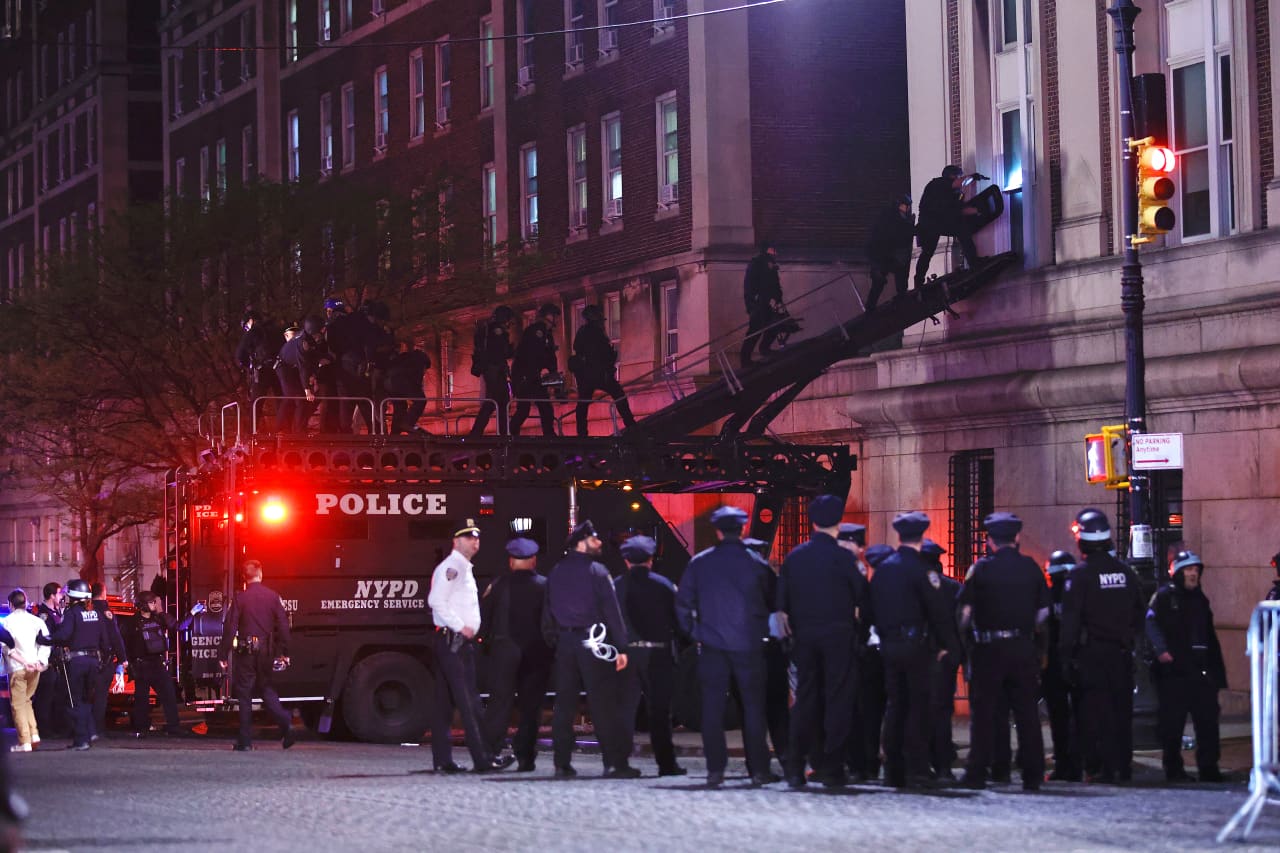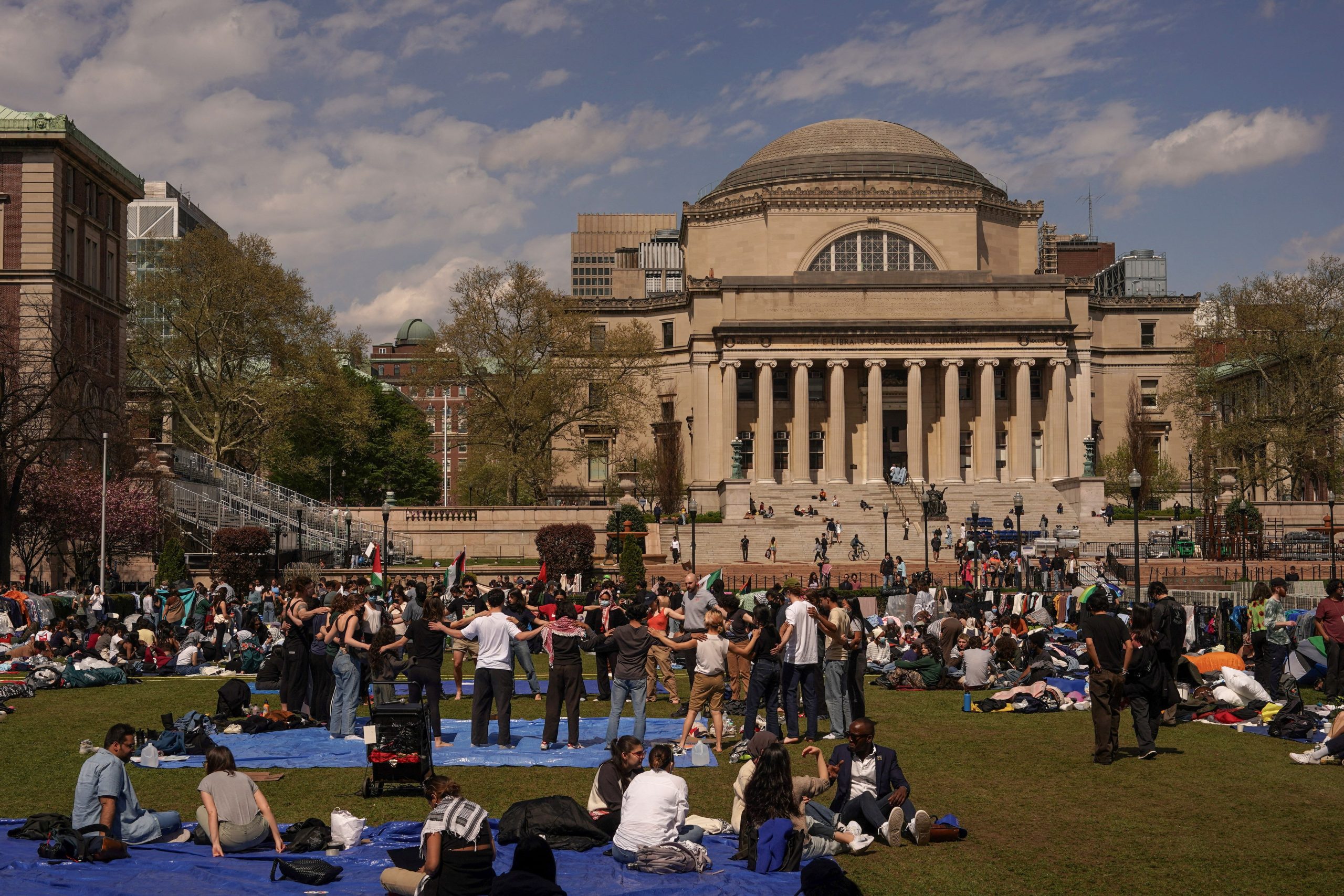Hundreds of New York Police Department officers, many armed with batons and in riot gear, entered Columbia University’s campus on Tuesday evening to confront student protesters who had occupied a campus building in protest of the Israel-Hamas war.
The protesters, who had barricaded themselves inside Hamilton Hall, were largely peaceful, but the university claimed they had “chosen to escalate the situation” by occupying and vandalizing the building.
The police action came after more than a week of protests on campus, which had been largely peaceful until Tuesday evening. The university had ordered students to shelter in place and the NYPD had demanded that students stay inside their dorms, but the protesters refused to leave.

The university claimed that the protesters were not affiliated with the university and that the decision to call in the NYPD was “made to restore safety and order to our community.”
The police entered the hall through a second-floor window at around 9:30 p.m. and arrested dozens of protesters. Video showed demonstrators in zip ties being led into NYPD buses. The NYPD said Hamilton Hall was cleared of protesters just before 11:00 p.m.
Other Leaders and Schools Have Discovered a Safe, De-escalatory Approach
The response to the protests has been widely criticized, with Rep. Alexandria Ocasio-Cortez (D-N.Y.) blasting the mayor and university leadership for their handling of the situation. “If any kid is hurt tonight, responsibility will fall on the mayor and univ presidents,” she wrote on social media.
“Other leaders and schools have found a safe, de-escalatory path. This is the opposite of leadership and endangers public safety. A nightmare in the making.” The Columbia chapter of the American Association of University Professors (AAUP) also denounced the police presence, warning of potential violence.
“Columbia faculty have spent the day offering our help to defuse the situation on Columbia’s campus and have been rebuffed or ignored,” the chapter’s executive board wrote in a statement. “NYPD presence in our neighborhood endangers our entire community. Armed police entering our campus places students and everyone else on campus at risk.”
The AAUP chapter noted that campus bylaws require faculty approval for any deployment of NYPD on campus, which did not occur. Student-run WKCR radio at Columbia reported that NYPD will remain on campus until May 17, citing an email to students. The unprecedented police response is planned to continue past the university’s graduation next month.

The police action against protesters comes exactly 58 years after Columbia called in NYPD to break up a similar occupation of Hamilton Hall in protest of the Vietnam War. The university has since denounced its own decision to call in police at that time, which resulted in over 700 arrests.
The criticism from faculty comes the same day Barnard College’s president faced a vote of no confidence. The Columbia subsidiary’s vote resulted in 77 percent of participating faculty going against the president, citing the school’s response to protests.
Columbia is at the center of political attention for the protests, with lawmakers from both parties calling on Columbia University President Minouche Shafik to resign if protests cannot be quickly quelled.


